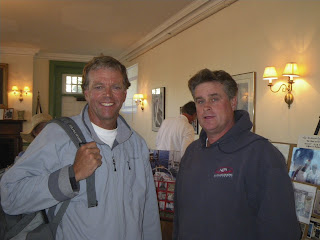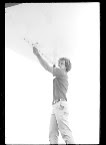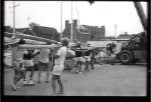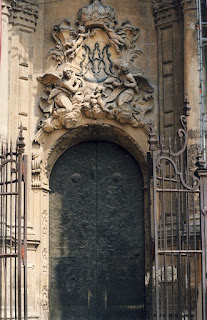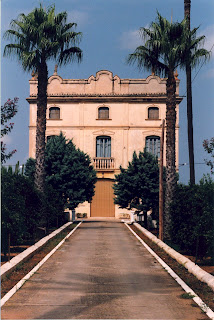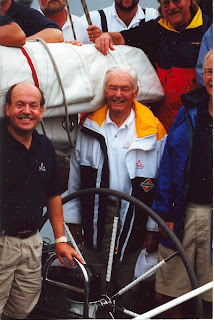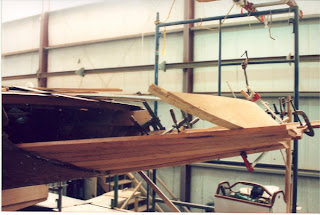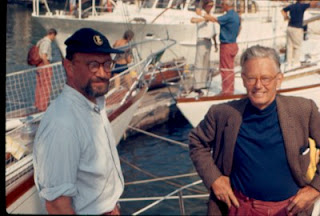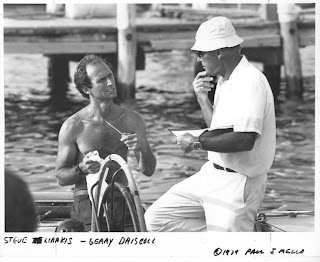 The entry about wire sheets reminded me of an incident while sailing on Intrepid in 1979. If you read far enough back in my blog there is an entry about my two seasons aboard Intrepid with Gerry Driscoll. It was an attempt by Gerry to come back in 1980 with Intrepid. It was contingent on finding financial backing. We were sailing against France 3 everyday, as Intrepid belonged to Baron Bic at the time.
The entry about wire sheets reminded me of an incident while sailing on Intrepid in 1979. If you read far enough back in my blog there is an entry about my two seasons aboard Intrepid with Gerry Driscoll. It was an attempt by Gerry to come back in 1980 with Intrepid. It was contingent on finding financial backing. We were sailing against France 3 everyday, as Intrepid belonged to Baron Bic at the time.
Category: america’s cup
Jack Sutphen’s book signing
 Jack’s book:”Messing About in Boats” was published earlier this year. He was in Newport this weekend for a book signing in conjunction with the 12 Meter North American Championships, at the Seaman’s Church Institute. Lots of people turned out. I first met Jack in the 1960’s, he was working at Ratsey&Lapthorn sailmakers, as was Arthur Knapp. I raced against him on Long Island Sound.
Jack’s book:”Messing About in Boats” was published earlier this year. He was in Newport this weekend for a book signing in conjunction with the 12 Meter North American Championships, at the Seaman’s Church Institute. Lots of people turned out. I first met Jack in the 1960’s, he was working at Ratsey&Lapthorn sailmakers, as was Arthur Knapp. I raced against him on Long Island Sound.
wire sheets
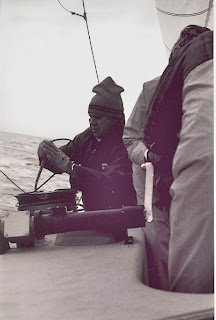 When I started sailing rope sheets and guys were normal. The rope was not very sophisticated, it stretched quite a lot. As the boats became more evolved wire sheets and guys became normal. It was 7×19 galvanized, because it was more flexible. It rusted quickly and broke down just as fast. Your hands were constantly torn by the meathooks.
When I started sailing rope sheets and guys were normal. The rope was not very sophisticated, it stretched quite a lot. As the boats became more evolved wire sheets and guys became normal. It was 7×19 galvanized, because it was more flexible. It rusted quickly and broke down just as fast. Your hands were constantly torn by the meathooks.
bannister’s wharf



 In 1977 bannister’s wharf was the dock for the Courageous/Independence syndicate. A lift was installed and we alternated boats in the lift.
In 1977 bannister’s wharf was the dock for the Courageous/Independence syndicate. A lift was installed and we alternated boats in the lift.
VALENCIA
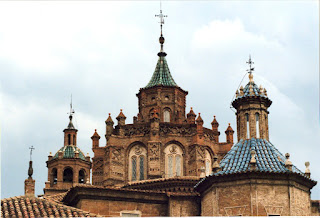
 Valencia is probably best known as the site of the America’s Cup, at least to sailors. How do you really characterize a city as old and as beautiful and as diverse?
Valencia is probably best known as the site of the America’s Cup, at least to sailors. How do you really characterize a city as old and as beautiful and as diverse?
Olin Stephens 1908-2008
 Olin Stephens turned 100 years old in April of this year. He touched so many lives during his lifetime; mentored many many yacht designers, and brought joy to many many yacht owners. The list of his accomplishments is so very long, as well. He designed 7 America’s Cup defenders, and was involved in several more.
Olin Stephens turned 100 years old in April of this year. He touched so many lives during his lifetime; mentored many many yacht designers, and brought joy to many many yacht owners. The list of his accomplishments is so very long, as well. He designed 7 America’s Cup defenders, and was involved in several more.
Pre-feeder
 In 1977 we discussed what would happen if when hoisting the jib it jammed in the pre-feeder. I worked evenings after racing hand making one pre-feeder capable of being opened in the event there was jam. As with so many things once the season was over, I put it away. Preparing for the America’s Cup Jubilee in 2001 the question came up again. I still had my hand made proto-type. Jim Gubelmann, a good friend took an interest in it as a marketable product.
In 1977 we discussed what would happen if when hoisting the jib it jammed in the pre-feeder. I worked evenings after racing hand making one pre-feeder capable of being opened in the event there was jam. As with so many things once the season was over, I put it away. Preparing for the America’s Cup Jubilee in 2001 the question came up again. I still had my hand made proto-type. Jim Gubelmann, a good friend took an interest in it as a marketable product.
1983 America’s Cup

 1983 changed the course of America’s Cup history forever, and with it the fate of Newport. Twenty-five years ago this September, a bittersweet anniversary.
1983 changed the course of America’s Cup history forever, and with it the fate of Newport. Twenty-five years ago this September, a bittersweet anniversary.
12 meters
 If you have read my blog, you have found entries about past America’s cup programs when the 12 meters were still the boats being raced. The Julibee in 2001 breathed new life into the class. Many older boats being restored and raced.It is because these boats were built to Lloyd’s scantlings that they survived at all.
If you have read my blog, you have found entries about past America’s cup programs when the 12 meters were still the boats being raced. The Julibee in 2001 breathed new life into the class. Many older boats being restored and raced.It is because these boats were built to Lloyd’s scantlings that they survived at all.


